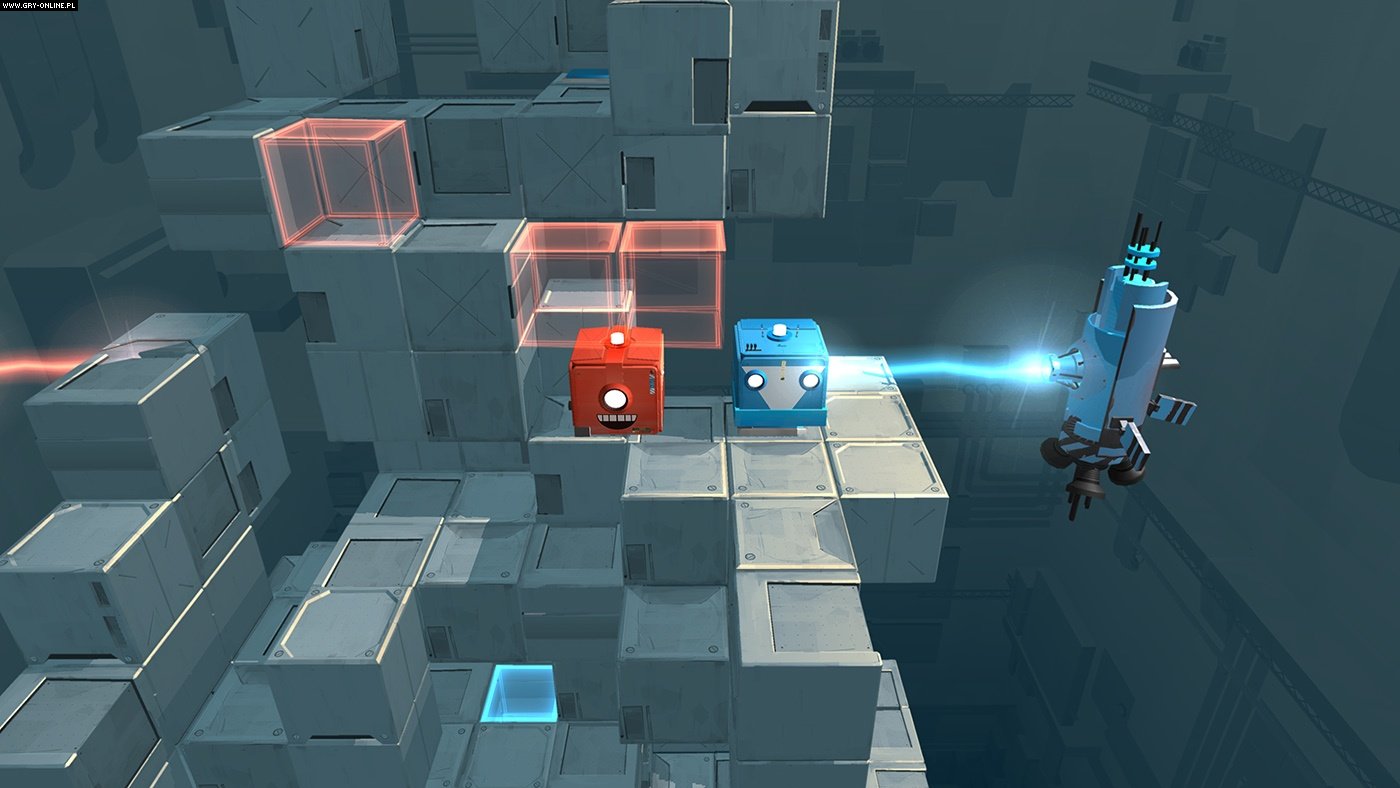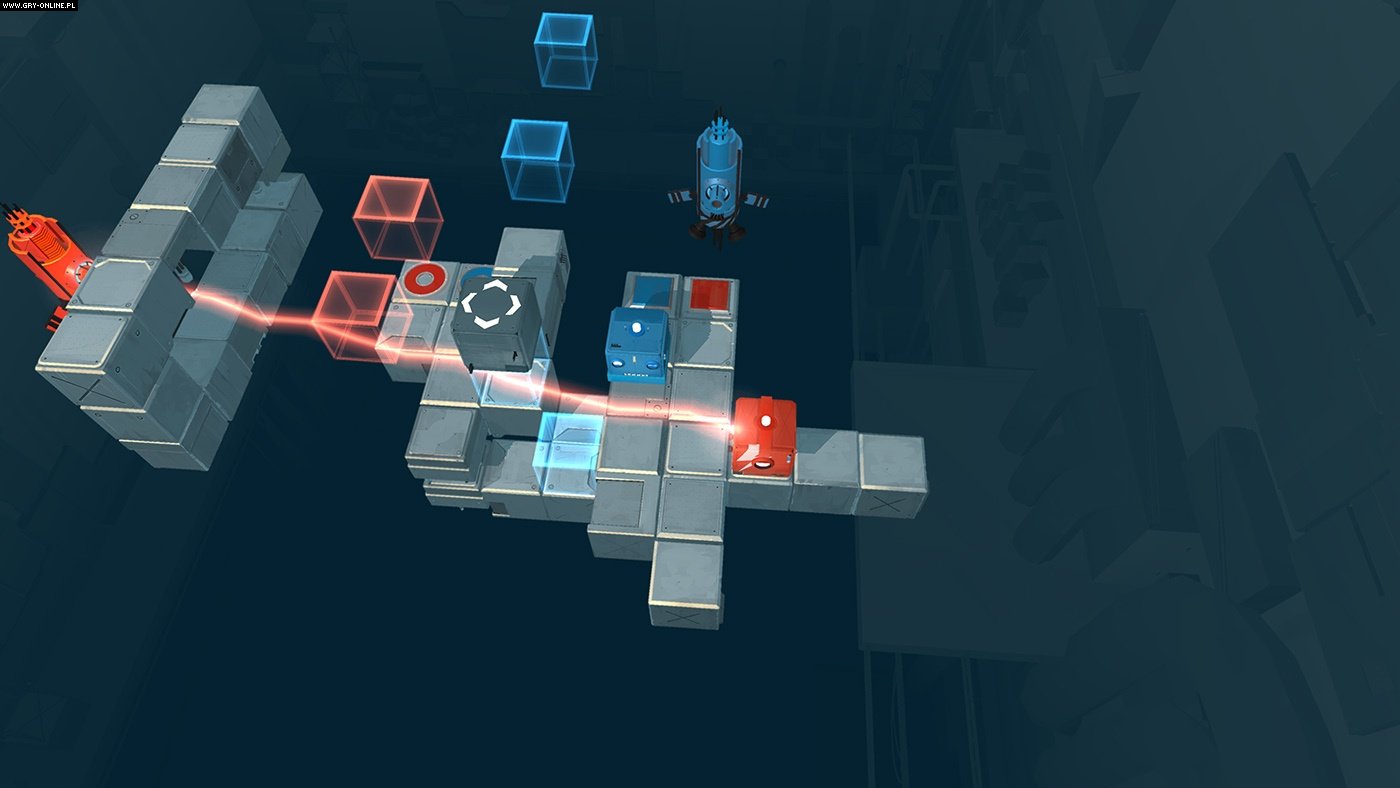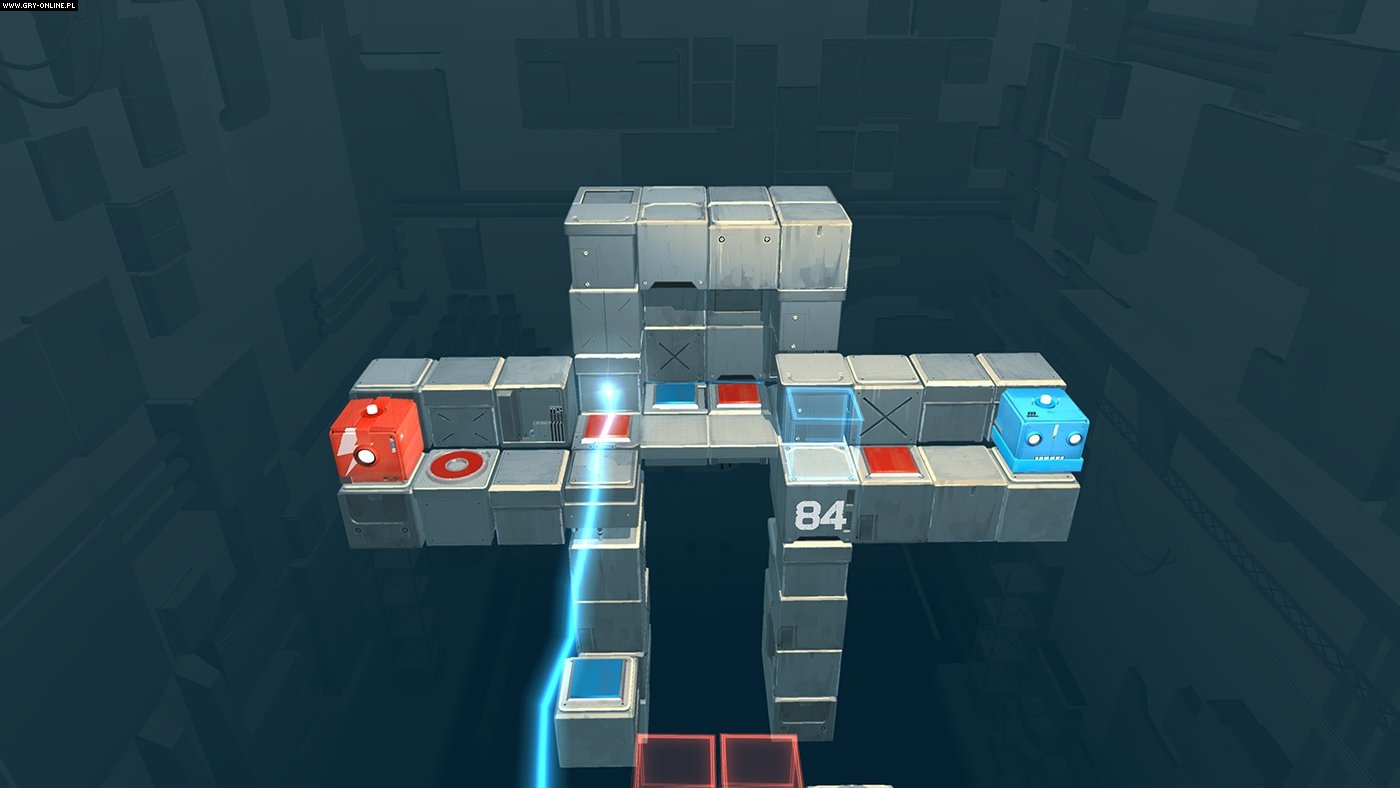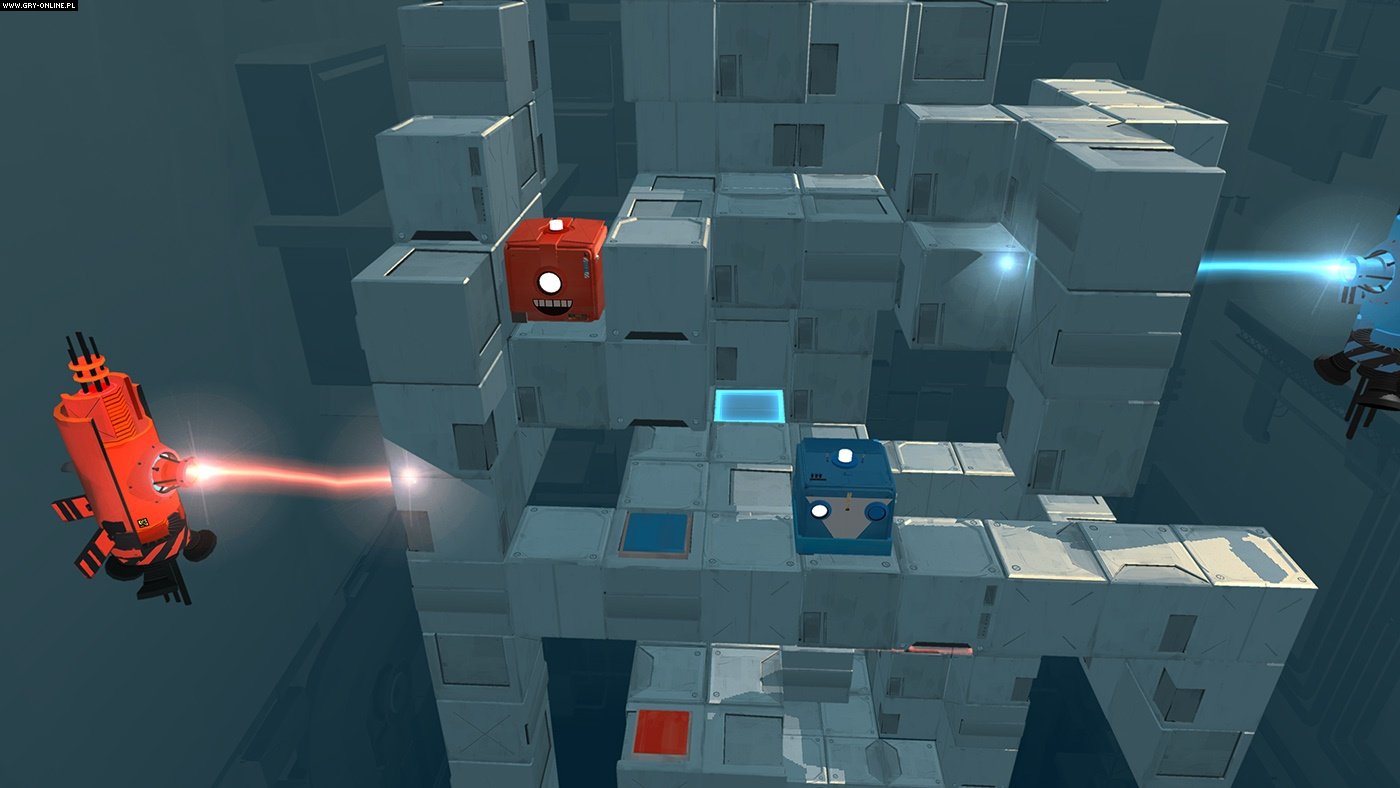Mechanics
The players assume the roles of sympathetic, cubic robots placed on the map made of blocks. The goal of the player is to lead their robot to its ending position marked with the same color the player's robot bears. The task is not easy however, because the creators placed many different traps and obstacles on the maps. Also, the player has to be careful not to fall off the map, since this results in the miserable robot getting destroyed – if this happens, one has to restart the level.
The maps are filled with sophisticated traps and contraptions that have to be dealt with in order to get the robots to their destination points. Each wrong move can lead to hidden spikes coming out, collisions with deadly energy beams, or activation of a moving block, which is capable of pushing the robot off the map. The key to success is to understand the principles governing each level and being able to coordinate one's actions with what the rest of the crew is doing.
Interconnected puzzles require the players to cooperate. For instance: each move of the green player results in the change of the yellow ending spot's position towards the starting spot of the yellow robot. At first glance, it suggests that the yellow player does not have to move at all. However, if they change their position, it results in the wall of yellow bricks moving as well – those are the force fields through which only the yellow robot can pass. Still, the yellow player has no need to go through the wall and to the opposite end of the map, as their job here is to find a position allowing another player to go through the hole in that yellow wall in order to reach their own ending spot.
Depending on the map, mechanics in Death Squared for PC, PS4 and etc. come in different variants and have different purposes. Only the robots bearing the same color can pass through the aforementioned force field; for others, it is an uncrossable barrier. However, the force field is not used on every map to create unbreakable walls. Since the brick of this type constitutes a solid structure for robots with a different color, it can be used as a bridge. If the barrier's position can be manipulated, for example, through pushing a button, it can serve the role of a transporter that can take a robot to the other end of the chasm.
The game is filled with different mechanics, such as energy beams (instantly destroy the robots hit, though can be blocked by the player with the same color), laser sensors (cause changes on the maps when the beam is touched), environmental blocks (the players can push them), teleports, spikes, etc. What makes the experience deeper, is that the robots can be standing on one another, for example, to distribute the players on various heights.
Some of the maps contain fields allowing the players to paint patterns on the bodies of the robots. One only has to step on such a field to see a moustache, some war camo, or brick outlines on the "face" of their little metal friend.
Game modes
Death Squared offers three modes, including a story campaign for one or two players (contains 80 levels), the PARTY mode for two or four players (40 levels), as well as the incredibly demanding VAULT mode, also for two or four players, and containing 30 high-difficulty levels.
Technical aspects
Death Squared for PC, PS4 and etc. offers simplistic, aesthetic visuals. The gray color dominates in the elements of the maps, but the active objects bear the colors of the player-controlled robots. As a result, the game is fully legible and nothing disturbs the players when solving the puzzles.

![[1:01] trailer #1](https://cdn.gracza.pl/galeria/filmy/640x360/444889516.jpg)







